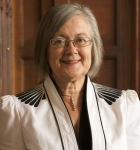Share it
Today’s new appointments mean Lady Hale will remain the only female member on a bench of 12. Last week she gave the Kuttan Menon Memorial Lecture on “Equality in the Judiciary”. In the lecture she explained that the problem we face is “getting people who have never suffered discrimination simply on the grounds of the colour of their skin or the difference in their chromosomes to understand what it is all about”. The statistics speak for themselves – 22.5% of the judges in the ordinary courts are women, and only 4.2% are black and minority ethnic. Lady Hale points out that in reality these figures may well be lower – they are distorted by the inclusion of fee-paid part timers, many of whom will never become full-time judges. The Court of Appeal figures are worse, with 10.5% female judges and no BME, and none of the heads of division is female or BME. Also, England and Wales is out of step with the rest of the world in terms of judicial diversity – across the countries in the Council of Europe it is fourth from the bottom, above Azerbaijan, Scotland and Armenia. A look at the proportions of the Supreme Courts of other common law countries also reflects badly on England and Wales.
Although the lecture acknowledged that the establishment of the Judicial Appointments Commission and the introduction of applications rather than appointment by a “tap on the shoulder” were progress, the slow rate of change was criticised. It was suggested that the barriers to diversity inherent at each stage of a judicial career may justify an element of affirmative action.



